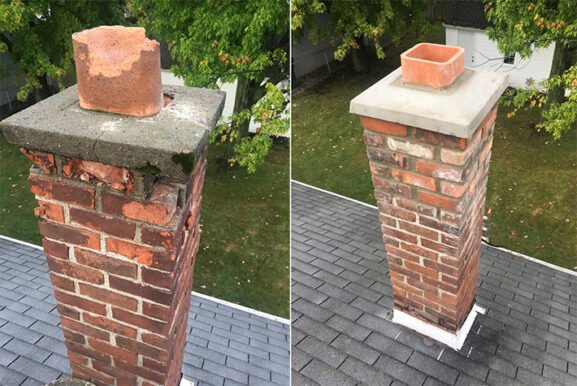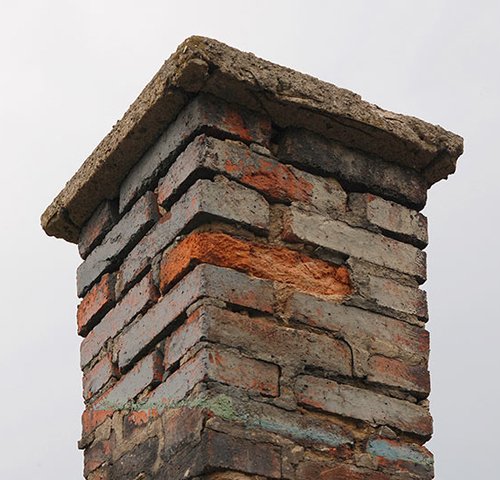Why Now Is the Right Time to Understand Leaning Chimney Repair Costs
Key Takeaways
- A leaning chimney is a structural warning sign that demands immediate attention.
- Repair costs can vary widely based on the severity of the lean and foundation damage.
- Timely repair prevents higher expenses linked to full chimney rebuilds or home damage.
- Professional inspections are essential for accurate cost estimates and safe solutions.
What Causes a Chimney to Lean in the First Place
A leaning chimney is never just a cosmetic issue. It’s often a symptom of deeper structural problems that need prompt attention. One of the main reasons chimneys lean is due to foundation issues. Many chimneys are built on shallow or poorly reinforced footings, especially in older homes. Over time, soil erosion, water intrusion, or freeze-thaw cycles can shift the ground, causing the foundation to settle unevenly. This results in the chimney pulling away from the house.
Other contributing factors include poor original construction, lack of proper chimney ties, or water damage that weakens the masonry. Regardless of the root cause, a tilting chimney poses serious risks. It can collapse unexpectedly or cause damage to your roofing, siding, and even your interior walls.
Signs That Your Chimney Is Leaning and Needs Urgent Repair
Not every chimney defect is easy to spot, but a visibly tilting structure is usually quite noticeable. However, some early warning signs may be subtle:
- Gaps forming between the chimney and the house wall
- Cracked bricks or mortar joints, especially near the base
- Water leakage near the chimney inside the home
- A visibly uneven or unstable chimney crown
If you observe any of these issues, it’s best not to delay. Leaning chimneys are progressive by nature, meaning the longer they are left alone, the worse — and more expensive — the problem becomes.
How Much Does Leaning Chimney Repair Typically Cost
Repair costs for leaning chimneys can range from $1,500 to over $10,000, depending on several factors:
- Degree of the Lean: A slight lean may only require stabilization and minor masonry work, costing around $1,500 to $3,000. Severe leans often need structural reinforcement or partial rebuilding.
- Foundation Work: If the footing or soil has failed, repairs may involve excavation, underpinning, or installing helical piers — raising costs to $5,000–$10,000 or more.
- Materials and Labor: Chimney size, brick type, scaffolding needs, and regional labor rates also affect final pricing.
For example, a homeowner with a mid-sized chimney experiencing a two-inch lean may pay around $4,000 to $6,000 to realign and reinforce the structure. However, if the foundation must be replaced, that figure could double.
Why Delaying Chimney Repairs Will Cost You More
Waiting to fix a leaning chimney often leads to higher long-term costs. As the tilt progresses, so does the pressure on connected roofing systems and structural framing. Cracks may appear inside the home, roof flashing can pull away, and moisture can begin leaking into vulnerable areas.
In extreme cases, a chimney can collapse during storms or seismic activity. This not only causes property damage but also creates a serious safety hazard for anyone nearby.
Addressing the issue early can save thousands of dollars in repairs and protect your home’s structural integrity. It also avoids the need for a full chimney rebuild, which is often the most expensive outcome. According to the International Association of Certified Home Inspectors, chimney issues are among the top neglected repairs that result in widespread home damage (source).
What to Expect During a Professional Inspection
Before any repair work begins, a licensed chimney specialist will perform a comprehensive inspection. This includes evaluating:
- The slope and degree of lean
- Foundation integrity and support
- Mortar and brick condition
- Roofline and flashing interaction
Using tools like laser levels, moisture meters, and video scopes, the inspector can identify both the visible and hidden issues. This evaluation is key in determining whether the lean can be stabilized or if full reconstruction is needed.
Some companies offer tiered inspections, where basic visual checks cost under $200, and detailed foundation assessments or structural reports may run between $300 and $800. Although this may seem costly up front, it often prevents tens of thousands in future damage.
Choosing the Right Repair Approach for Your Chimney
There’s no one-size-fits-all solution for leaning chimney repair. Depending on the condition and budget, your contractor might suggest:
Chimney Bracing
For minor leans, metal braces may be installed to secure the chimney to the structure. This is a cost-effective fix but may be temporary.
Helical Piers or Underpinning
If the foundation is failing, piers can be drilled into stable soil to support the chimney’s base. This is a permanent solution, though more expensive.
Partial or Full Rebuild
If the chimney is severely damaged or the lean exceeds safe limits, rebuilding may be the only option. This involves dismantling and reconstructing the structure from the ground up.
Each method carries a different cost range and lifespan, so understanding your home’s specific needs helps ensure your investment is both effective and lasting.
Long-Term Prevention Starts With Maintenance
Once your leaning chimney is repaired, staying proactive can prevent similar problems down the line. Schedule annual chimney inspections, especially before winter, to catch issues early. Make sure gutters are draining away from the foundation, and address any signs of water pooling near the base of your home.
Also, consider waterproofing the chimney exterior with breathable masonry sealants. These products help reduce water absorption without trapping moisture inside the bricks — a common cause of freeze-thaw damage.
Regular maintenance can extend the life of your chimney and reduce the chances of costly structural issues in the future.
Protecting Home Value Through Structural Awareness
A leaning chimney isn’t just a threat to your property — it’s also a red flag for home buyers and insurers. If you’re planning to sell your home, visible exterior damage like this can lower the perceived value or even halt a deal. Similarly, insurers may deny coverage for damage if it results from neglected maintenance.
Taking action quickly not only safeguards your home but also maintains its market value. In regions with seasonal freeze-thaw cycles or heavy rainfall, staying on top of these issues is critical.
By understanding the causes, costs, and solutions involved in chimney repair, homeowners can make informed decisions that lead to safer, more resilient homes.

